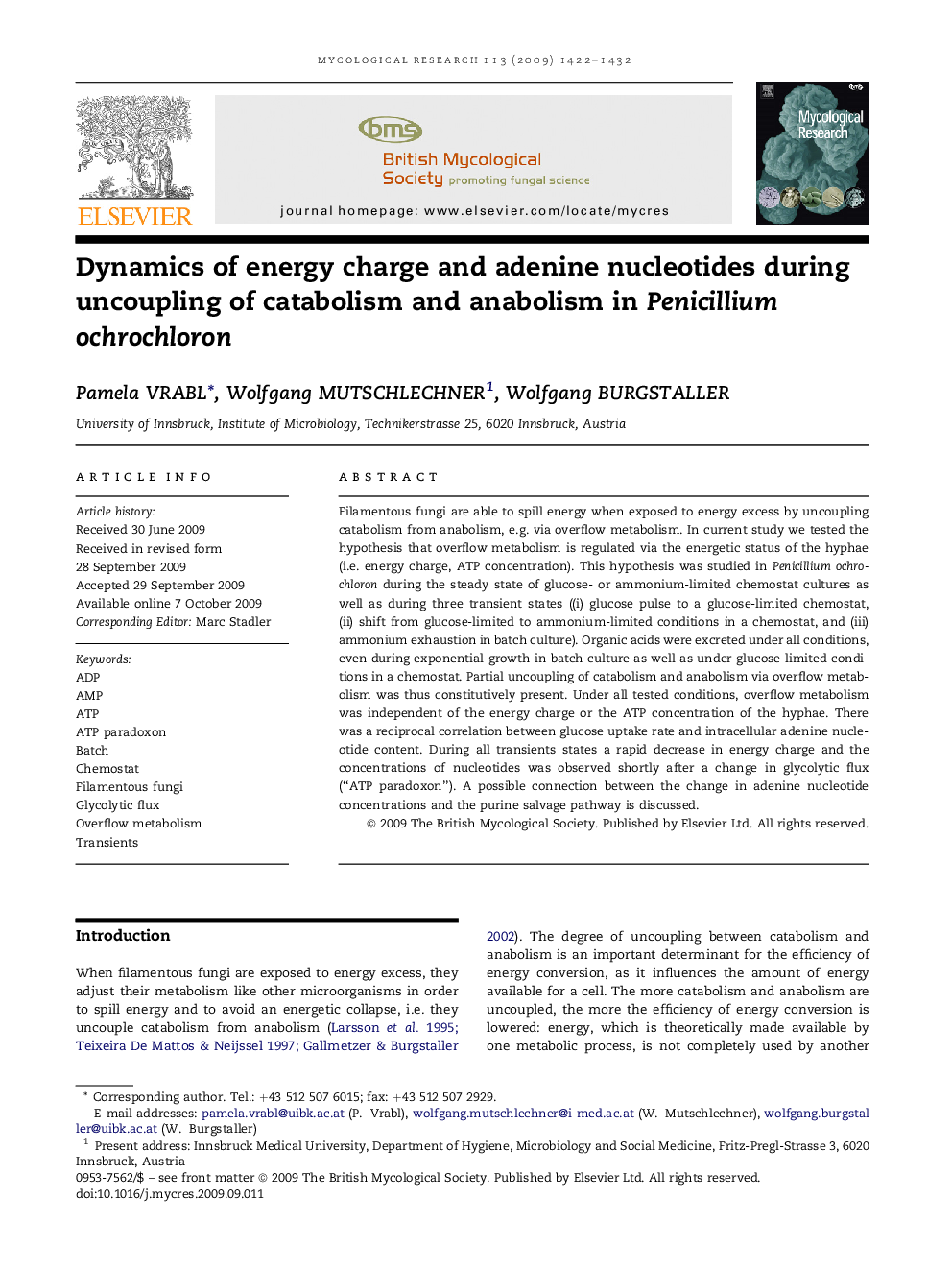| Article ID | Journal | Published Year | Pages | File Type |
|---|---|---|---|---|
| 4357485 | Mycological Research | 2009 | 11 Pages |
Filamentous fungi are able to spill energy when exposed to energy excess by uncoupling catabolism from anabolism, e.g. via overflow metabolism. In current study we tested the hypothesis that overflow metabolism is regulated via the energetic status of the hyphae (i.e. energy charge, ATP concentration). This hypothesis was studied in Penicillium ochrochloron during the steady state of glucose- or ammonium-limited chemostat cultures as well as during three transient states ((i) glucose pulse to a glucose-limited chemostat, (ii) shift from glucose-limited to ammonium-limited conditions in a chemostat, and (iii) ammonium exhaustion in batch culture). Organic acids were excreted under all conditions, even during exponential growth in batch culture as well as under glucose-limited conditions in a chemostat. Partial uncoupling of catabolism and anabolism via overflow metabolism was thus constitutively present. Under all tested conditions, overflow metabolism was independent of the energy charge or the ATP concentration of the hyphae. There was a reciprocal correlation between glucose uptake rate and intracellular adenine nucleotide content. During all transients states a rapid decrease in energy charge and the concentrations of nucleotides was observed shortly after a change in glycolytic flux (“ATP paradoxon”). A possible connection between the change in adenine nucleotide concentrations and the purine salvage pathway is discussed.
